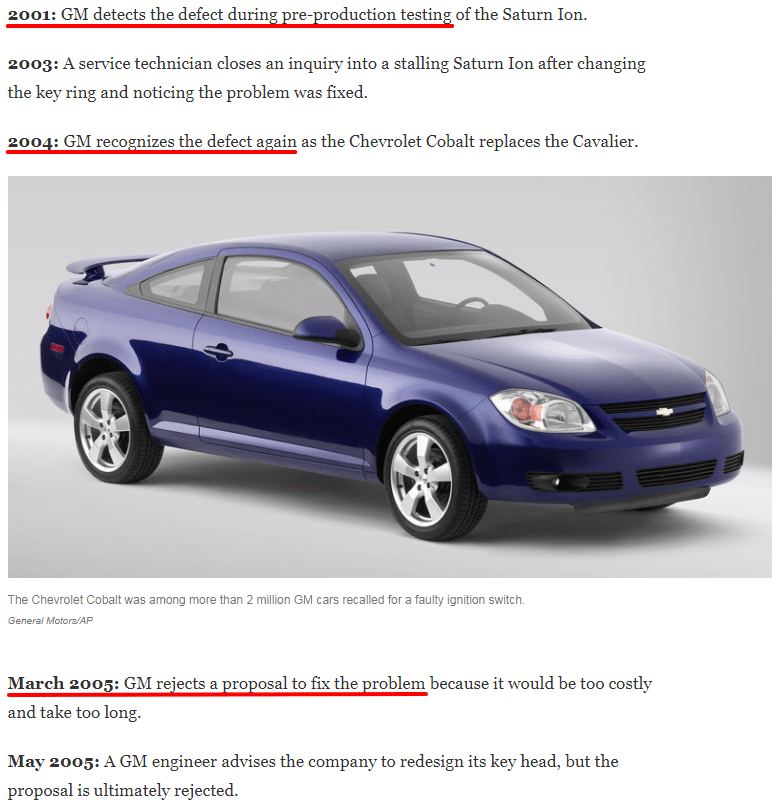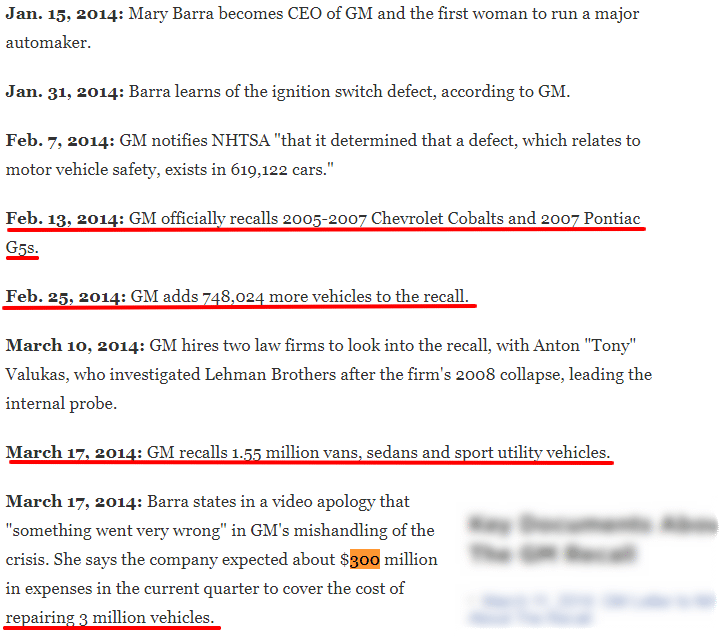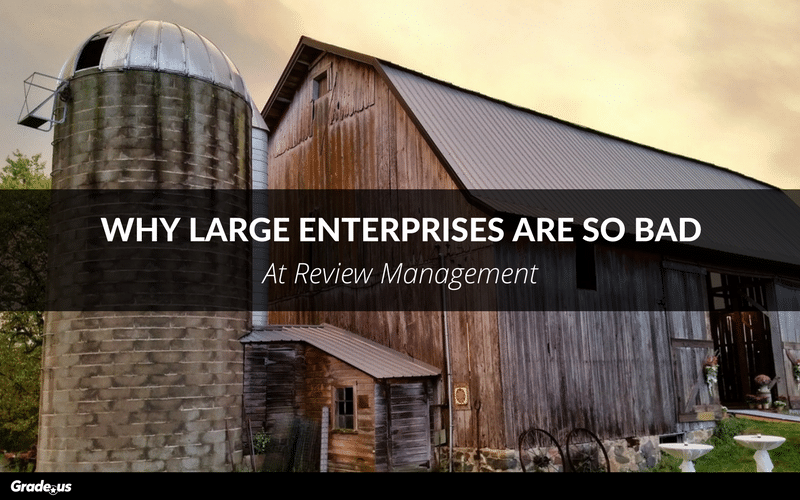They're horrible at it.
When it comes to online reviews, most large enterprises are terrible.
At first glance this doesn't make sense. These massive corporations attract some of the best employees. They have massive budgets and resources that smaller companies don't.
They have everything they need to win the online review game. So why are they struggling?
- Their listings aren’t set up or claimed
- There’s a small amount of reviews, sprinkled across review sites
- Low aggregate ratings
- No one takes the time to respond to customers who are unhappy or in need of support
- When someone does respond, they use generic corporate speak
So your enterprise needs to eliminate every, single department then?
Itself.
Large enterprises have massive amounts of resources, talented people and often times, incredibly detailed knowledge about their customers.
None of that matters.
Because enterprises struggle with a predictable and inevitable problem. Eventually, every small business that grows into an enterprise will face the same exact problem.
I'm talking about corporate silos.
As a company grows it's split into departments (e.g. marketing, legal, engineering, etc.). These departments exist in most organizations regardless of their size. They're necessary, but they also create a significant problem.
They create silos.
What specifically is a corporate silo? A corporate silo refers to the barriers that exist between two or more departments. While departments are necessary and helpful, silos are destructive and bad for the overall well-being of an enterprise.
The enterprise is losing the war with...
If departments create silos, and silos are destructive it seems reasonable to assume that we need to eliminate departments, right? Move to an alternate corporate structure and the problem is solved easy peasy!
Not so much.
Not only is it impossible for most enterprises to eliminate pre-existing departments, it's also counterproductive. Diminishing returns, transitional pain and employee resistance make it a difficult path for most enterprises to follow.
Even worse, marketing and operations has the unique challenge of creating blanket policies and procedures that work for every location, regardless of the challenges that are unique to each. It’s incredibly difficult to please everyone.
So we're stuck then.
Silos are an inevitable part of departmental structure. There's no way around it and no way to improve the sorry state of enterprise reviews.
Or is there?
Here's the key to amazing enterprise reviews:
Understanding and recognizing your silos.
If you're looking to dramatically improve the quality of your reviews, you'll need a clear idea of several things:
1. Recognizing corporate silos
2. Understanding the barriers present in corporate silos
3. Counteracting your organization's attempts to protect the silos in place
4. Choosing a unifying goal
Let's break these four areas down in a bit more detail.
1. Recognizing corporate silos
Remember the definition I shared earlier?
"A corporate silo refers to the barriers that exist between two or more departments."
These corporate silos are fairly straightforward to recognize because they're so common. In fact, they're fairly easy to find. Just look for toxic emotions that exist between departments.
Symptoms of corporate silos include:
· Excessive department politics. Directors schmoozing with executives to win incentives, benefits and favor above and beyond other departments.
· Turf wars and unhealthy rivalries. A recession encourages managers in various departments to fight each other for dwindling resources. Inter-departmental loyalties encourages disloyalty to the enterprise.
· Persistent animosity. Marketing hates legal because legal rejected most of their new ideas for an upcoming marketing campaign. Customer service punishes the sales team for mistreating employees.
When these details are present your enterprise is misaligned. Your online reviews are a reflection of your enterprise. Problems with silos = terrible online reviews.
These difficulties stem from a lack of clarity.
Departments that are actually involved in ORM decisions conflict with each other.
Operations: What’s the proper etiquette for requesting reviews? Who responds to customer reviews? Location managers or corporate?
Marketing: Who’s responsible for updating listings? Will they need approvals from legal? Who’s monitoring information changes? Are reviews being used in ads and marketing materials to win new customers?
Legal: Who’s the point of contact in legal? Is it the the same person for each location/franchise? Is there an easy way for managers and staff to reach a contact person?
Customer support: Does this team respond to reviews? All of them for every location? Is there a centralized system in place to monitor who said what and when? Are there any response protocols in place?
Social media team: Does this team respond to informal reviews on social media (e.g. tweets praising or condemning the company)? If social media is part of marketing, who do they report to for social media support. Which department takes the lead if customers communicate on multiple channels (e.g. Twitter + Yelp + Email)?
See how confusing this gets?
If you’re missing a clear, company-wide plan of action, silos are the default. It’s simply too much for any one department to handle on it’s own. It’s so easy for other departments to assume malicious intent.
Can you blame them?
When miscommunication becomes a problem, it’s tough for outsiders (other departments) to see around that.
The best answer is the one that everyone in your company rallies behind. It’s up to you to determine the rules and parameters for everyone involved. And it has to be done ahead of time.
2. Understanding the barriers present in corporate silos
Corporate silos can be caused by interpersonal conflict between executives. But there's a far more common cause at play in most organizations.
Misunderstanding.
Silos crop up more often because the enterprise doesn't have a unifying goal. Employees throughout the organization are focused on lots of different goals. Each department has their own set of goals and objectives. Naturally, this creates conflict.
It gets worse.
These conflicting goals are subtle at first. Until employees in one department begin to notice what's going on in other departments.
"Why aren't they on board with what we're trying to do here?"
Their confusion about the conflicting goals they see in other department creates confusion. That confusion progresses to disappointment and disillusionment. Eventually it metastasizes into resentment and hostility. At this point toxic beliefs begin to take hold.
Your co-workers are intentionally working against you.
Which eventually tempts these conscientious employees to begin working against their co-workers on purpose! Employees in other departments respond in kind and a vicious silo takes hold of the organization.
3. Counteracting your organization's attempts to protect the silos in place
At this point, a hostile attribution bias is in place. Anything that anyone in a conflicting department says will be filtered through the lens of negativity. Anger, fear and distrust will smother most attempts at fixing the problem.
Most.
There are a few simple strategies your enterprise can use to counteract this cognitive bias. They're simple but that's not synonymous with easy. An enterprise is a massive structure. It'll take a concerted effort and a fair amount of time to turn things around.
1. Take the blame. If you're at the top of your organization the blame ultimately lies with you. Every departmental silo leads back to you.
2. Don't share blame. If you're not at the top of your enterprise and crucial conversation isn't a core value at your company, avoid blame.
3. Narrate what's happening. Share your concerns about any issues with hostile attribution bias. Share, in a non-judgmental way, what you see happening in your organization. Praise by name, criticize by category.
4. Earn interdepartmental buy-in. Communicate as openly and as honestly as you can. Build allies, form partnerships in other departments. Ask them to help you build a partnership.
In many cases, it's a good idea to approach co-workers incrementally. It's less than ideal but it gives you the chance to defang the emotional contagion that's spread throughout your organization.
4. Choosing a unifying goal
How do you go about defusing the destructive silos in your organization?
You rally the enterprise around a (temporary) unifying goal. Each department has an objective that leads to or directly contributes to the unifying goal.
What does a good unifying goal look like? A good unifying goal is...
· Singular, unique. It's something you can rally the whole organization behind. Focus on one unifying goal. Not seven or three. One unique goal.
· Qualitative. It's not focused on measurement, data, statistics or KPIs. A good unifying goal relies on verbs and is guided by emotion.
· Timed. "Cutting costs, increasing revenue," these are important metrics, but they're never ending and demotivating.
· Company-wide. If various departments are focused on multiple goals, if a single department is left out, your silos are still in place.
· Simple. Simple gets done. The more complex the unifying goal, the less captivating it will be and the less likely it is for your enterprise to attract the kind of positive reviews your organization needs.
With a unifying goal in place, every department should have a clear objective that contributes directly to the unifying goal.
Here's what I mean.
Unifying goal
· Restore XYZ corp's online reputation
Objectives
· Marketing. Create and implement review procedures
· Customer service. Get a list of customer complaints and objections
· HR. Hire more agreeable and conscientious support reps
· Legal. Create new, reader-friendly product agreements
· Developer. Reduce software bugs and errors
Time frame. 6 months
It's simple and straightforward. You create a time bound unifying goal to rally your organization behind. You give each department a clear set of objectives that relate directly to the unifying goal. Then you set a time frame and you get to work.
Expect failure but don’t accept it.
- Use real-time communication tools like Stride or Slack to handle ongoing communication. The great thing about these tools is the fact that there’s a written record of everything that’s shared.
- Use customer support tools like HelpScout to centralize customer communication, include live chat, and social media integrations. Use Zapier to integrate review management tools like Grade.us.
- Add social media and CRM tools like Highrise or PipeDrive to ensure each department is on the same page.
- Use project management tools like Basecamp and Dropbox to keep everyone on the same page. Provide ready access to the files and information each department needs.
- Communicate, communicate, communicate. Let everyone in and outside of your departments know what’s going on. Create a plan ahead of time.
Finally, create a chain of command. Determine the who, what, how and why of common situations ahead of time.
What happens when you're done?
You set a new unifying goal and you go on the attack. You consistently align your enterprise behind a clear goal. Every department is on the same page and everyone focused on the same goal.
What happens when the enterprise gets it wrong?
General Motors agreed to pay $120 million dollars to settle claims from a major scandal. They also agreed to pay $35 million in penalties and forfeit $900 million dollars to the United States.
Why?
Faulty ignition switches. Recalls happen every day, why such a steep price?
GM knew their faulty ignition switches were a problem. In fact, they knew it was a major problem for almost 15 years!

They detected the problem during pre-production testing way back in 2001. GM ignored it. The defect came up again in 2004. In 2005, GM refused to fix the defect - stating it would take too long and cost too much.
Amber Rose, 16, dies as a result of her car's faulty ignition system.
Still nothing.
Their faulty ignition system would be implicated in 124 deaths and 275 injuries. More than 30 million vehicles would be recalled worldwide.
In 2014, GM finally began to issue recalls for their faulty ignition system.

GM launched their "Speak up for Safety" campaign in 2014, encouraging employees to speak up when they notice a problem.

It would be easy to label GM as evil.
But they're not.
And while there's definitely some moral culpability here, it's not the real culprit in our story. It's corporate silos. How do we know? The Valukas report.
Former U.S. attorney Anton Valukas's 325 page report found:
"A critical factor in GM personnel's delay in fixing the switch was their failure to understand, quite simply, how the car was built."
Several engineers, service technicians, general counsel, the company at large - they all had an incomplete picture of the product and the problem. GM's departmental goals were consistently misaligned. Valukas continues in his report:
"Although everyone had responsibility to fix the problem, nobody took responsibility . It was an example of what one top executive describes as the 'GM nod,' when everyone nods in agreement to a proposed plan of action, but then leaves the room and does nothing."
Corporate silos led to insider politics, ending with a devastating internal battle that continues to affect trustworthiness, customer goodwill and reviews today.
When it comes to reviews enterprises continue to struggle
These large organizations have massive budgets, near-unlimited resources and top-tier talent. They have everything they need to win the online review game.
So why are they losing?
Their size creates corporate silos. But it doesn't have to be a death sentence for your business. If you’re in charge of fixing the ORM problem at your enterprise, create a solid plan that provides/addresses:
- Communication: How will data be processed/shared? Documentation: Who responds to reviews and when? How should they respond?
- Key performance indicators: what are the goals, objectives or KPI’s for each location?
- Chain of command: Who ensures each location generates positive reviews? If a situation needs escalation what’s the chain of command?
- Data, training and reports: Where can staff go to get the training materials they need? Who receives performance reports? Provide staff/locations with execution plans for improving a specific location’s review portfolio.
Build your review portfolio around and rally your team behind a clear, unifying goal. Create a clear and comprehensive plan and you'll have everything your one-day-enterprise needs to win the war.
About the Author
Andrew McDermott
Andrew McDermott is the co-founder of HooktoWin. He shows entrepreneurs how to attract and win new customers.









